Wind Efficiency

How efficient is wind energy compared to other renewable sources ?
The efficiency of wind energy is influenced by factors such as capacity factor, technological advancements, and site specificity. Compared to other renewable sources like solar, hydropower, geothermal, biomass, and tidal/wave energy, wind energy has a relatively high capacity factor ranging from 35% to 45%. Technological improvements have increased the efficiency of wind turbines over the years, making them more productive. However, the efficiency of wind farms is highly dependent on the location, with optimal sites achieving higher efficiency rates. In conclusion, wind energy compares favorably to other renewable sources in terms of efficiency, but the choice between different renewable energies often depends on local conditions, economic factors, and technological advancements.

Can wind turbines be used in residential areas ?
The use of wind turbines in residential areas is possible and offers numerous benefits, including reduced dependence on fossil fuels and increased energy independence. However, there are challenges such as zoning laws, noise levels, and aesthetic concerns that must be considered. Economic factors like upfront costs and maintenance expenses also play a role. To successfully implement wind turbines in residential settings, homeowners should assess their site's suitability, work with professionals to plan the system, engage with the community, choose a reputable installer, and monitor the turbine's performance regularly.
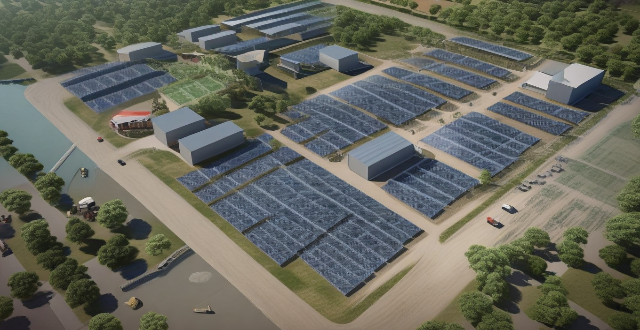
How can wind energy be stored for later use ?
Storing wind energy is crucial for integrating renewable energy into power grids. Wind turbines produce electricity intermittently based on weather conditions, unlike traditional power plants that can adjust output on demand. Several methods exist to store wind energy effectively, including battery storage systems, pumped hydro storage, compressed air energy storage (CAES), chemical batteries, flow batteries, thermal storage, and flywheels. When selecting a storage method, factors such as capacity, duration, cost, efficiency, environmental impact, and geographic suitability must be considered. As technology advances and costs decrease, we can expect more innovative solutions for efficient wind energy storage.

How does wind energy compare to solar energy ?
Wind energy and solar energy are both renewable sources of energy that have gained popularity in recent years. Wind turbines can generate electricity with high efficiency and low maintenance cost, while solar panels have a low initial cost and long lifespan. However, wind turbines can create noise pollution and have limited availability, while solar panels rely on sunlight and require a large amount of land. Both sources have their advantages and disadvantages, making them suitable for different applications.

Can permanent magnet motors be used in renewable energy systems such as wind turbines ?
Permanent magnet motors are used in renewable energy systems, including wind turbines, due to their high efficiency and reliability. They offer advantages such as high efficiency, low maintenance, good torque characteristics, size and weight benefits, and adaptability. However, challenges and considerations include cost, thermal management, and dependence on rare earth metals. Overall, permanent magnet motors are a popular choice for efficient and reliable energy conversion in wind power applications.

How can wind energy contribute to a sustainable future ?
Wind energy is a renewable and sustainable source of power that can significantly contribute to a more sustainable future. It offers several benefits including reducing carbon emissions, stimulating economic growth, enhancing energy security, driving technological innovation, compatible land use, community engagement, scalability, improving health impacts, and promoting education and awareness. By incorporating wind energy into our energy mix, we can create a cleaner, healthier, and more sustainable environment for future generations.

What is offshore wind energy and how does it work ?
Offshore wind energy is a renewable source that generates electricity from wind turbines installed in bodies of water. It offers advantages such as higher wind speeds and less impact on terrestrial environments but faces challenges including high installation costs and environmental considerations. The process involves converting wind power into electrical energy, which is then transmitted to the mainland grid.
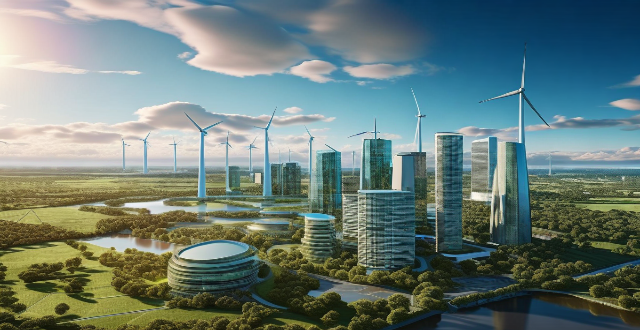
What is wind energy and how effective is it compared to other renewable sources ?
This article provides an overview of wind energy, discussing its definition, effectiveness compared to other renewable sources, cost-effectiveness, environmental impact, scalability, and availability. It highlights the benefits of wind energy as a clean and sustainable source of electricity that can be produced at any scale and in many parts of the world.

What is wind energy and how does it work ?
Wind energy is a renewable and sustainable source of electricity that harnesses the power of wind through the use of wind turbines. It offers several advantages, including being environmentally friendly, cost-effective, and job-creating. However, challenges such as intermittency, site selection, visual impact, and wildlife impacts must be considered. Despite these challenges, advancements in technology and planning practices are making wind energy an increasingly viable option for meeting our energy needs.

What are the current building energy efficiency standards ?
The text discusses building energy efficiency standards, which are regulations and guidelines designed to reduce energy consumption. These standards promote sustainable development, reduce greenhouse gas emissions, and improve indoor air quality. The text lists seven key areas for improving energy efficiency: insulation and air tightness, heating, ventilation, and air conditioning systems, lighting systems, renewable energy sources, water efficiency, building materials and construction practices, and energy management and monitoring. Each area includes specific strategies and technologies that can be employed to increase energy efficiency.
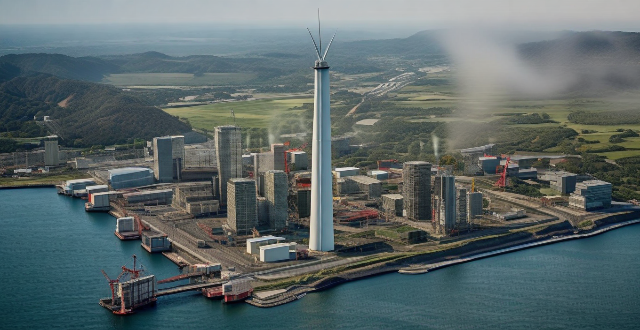
What countries are leading in wind energy production ?
The leading countries in wind energy production are China, the United States, Germany, India, and Spain. China has the largest installed capacity with 282 GW as of 2021, followed by the US with 119 GW, Germany with 60 GW, India with 38 GW, and Spain with 26 GW. These countries have seen rapid growth and innovation in their wind energy sectors, with key regions and states contributing significantly to their overall output. Their efforts demonstrate a commitment to reducing carbon emissions and transitioning towards sustainable energy sources.

How does wind energy affect the environment ?
Wind energy is a renewable source of power that has become increasingly popular as an alternative to fossil fuels. However, like any form of energy production, it does have some environmental impacts. The positive effects of wind energy on the environment include a reduction in greenhouse gas emissions, conservation of natural resources such as water and no need for fuel. Wind farms can coexist with agricultural activities and modern turbine designs can help minimize impacts on local wildlife. However, there are also potential negative effects on the environment. These include visual and noise pollution, as well as potential impacts on wildlife such as bird and bat collisions and habitat disruption. The presence of large structures like wind turbines can also alter local wind patterns and potentially affect microclimates. Overall, while wind energy offers significant benefits in terms of reducing greenhouse gas emissions and conserving natural resources, it is not without its challenges regarding visual and noise pollution, as well as potential impacts on wildlife. Careful planning and technological advancements can help mitigate these negative effects, making wind energy an increasingly viable option for a sustainable future.

How do distributed energy systems contribute to energy efficiency and sustainability ?
Distributed energy systems (DES) play a significant role in improving energy efficiency and sustainability. DES refers to a comprehensive energy utilization system located near the end-users, which can operate independently or in conjunction with the grid. It encompasses various technologies such as combined heat and power (CHP), renewable energy, energy storage, and fuel cells. Here is a detailed exploration of how distributed energy systems contribute to energy efficiency and sustainability: 1. **High Energy Efficiency** - **Combined Heat and Power (CHP)**: CHP systems generate both electricity and heat simultaneously, providing an overall efficiency of up to 80%-90%. This is considerably higher than traditional centralized power plants, which typically have an efficiency of around 40% for advanced coal-fired power plants. - **Energy Cascade Utilization**: Distributed energy systems utilize energy cascading, where the byproducts of one process are used as inputs for another. For example, waste heat from electricity generation is used for heating or cooling, maximizing energy utilization. - **Reduced Transmission Losses**: Due to their proximity to consumers, DES reduces the need for long-distance transmission of electricity, thereby minimizing transmission losses compared to centralized power systems. 2. **Environmental Protection** - **Low Emissions**: Distributed energy systems often use clean energy sources like natural gas, solar, and wind, which have lower emissions compared to traditional coal or oil combustion. - **Renewable Energy Integration**: Distributed energy systems can easily integrate renewable energy sources like solar panels and wind turbines, promoting the use of sustainable energy. - **Waste Reduction**: By using waste heat and integrating multiple forms of energy production, DES helps reduce energy waste and its associated environmental impact. 3. **Economic Benefits** - **Cost Savings**: Distributed energy systems can reduce energy costs by decreasing transmission and distribution expenses. They also provide more stable energy prices compared to fluctuating grid rates. - **Infrastructure Investment Reduction**: Since DES requires less infrastructure compared to large-scale power plants and transmission networks, it can lead to significant cost savings in infrastructure investment. - **Market Potential**: The development of DES has opened up new markets and business opportunities, especially in the sale and maintenance of distributed energy equipment. 4. **Enhanced Reliability and Resilience** - **Decentralized Architecture**: The decentralized nature of DES means that if one system fails, others can still operate, ensuring continuous energy supply. - **Storm and Disaster Resilience**: During large-scale disasters or extreme weather events, DES can serve as a crucial energy source when centralized power systems fail. 5. **Promotion of Smart Grid Development** - **Integration with Smart Grids**: Distributed energy systems can be integrated with smart grids, enabling two-way flows of electricity and information, which enhances overall grid efficiency and responsiveness. - **Demand Response Management**: DES allows for better demand response management, where consumption can be adjusted based on real-time supply and demand conditions, further enhancing energy efficiency. Additionally, there are several challenges and considerations for the widespread adoption of distributed energy systems: - **Technical Challenges**: The integration of multiple energy sources requires advanced technical expertise and sophisticated control systems. - **Policy Support**: While policies increasingly support DES, more comprehensive regulations and incentives are needed to encourage wider adoption. - **Economic Viability**: Although DES offers economic benefits, the initial investment can be high, which may limit access for some users. In summary, distributed energy systems contribute significantly to energy efficiency and sustainability through high energy utilization efficiency, environmental protection, economic benefits, enhanced reliability and resilience, and promotion of smart grid development. Despite certain challenges, the advantages of DES make it a critical component of future energy strategies.

What are the current challenges in scaling up wind energy production globally ?
The article discusses the various challenges that need to be addressed in order to scale up wind energy production globally. These include infrastructure development, technological barriers, environmental impact, economic factors, regulatory issues, and social acceptance. Overcoming these obstacles requires collaborative efforts from all stakeholders involved in the wind energy sector.
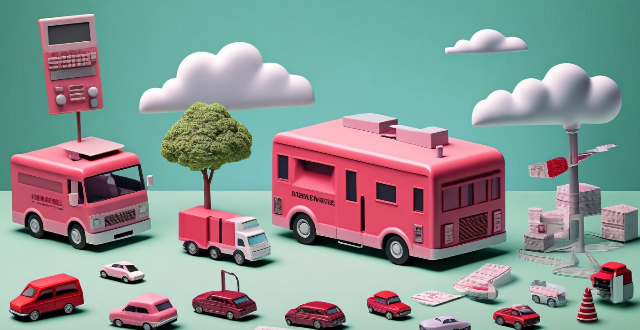
How can circular economy policies improve resource efficiency ?
Circular economy policies enhance resource efficiency by promoting sustainable practices like product redesign, encouraging reuse and sharing, maximizing recycling, reducing waste, supporting innovation, and building capacity for sustainable practices.

Is wind energy a viable option for developing countries ?
Is wind energy a viable option for developing countries? Yes, wind energy offers numerous benefits such as cost-effectiveness, sustainability, job creation, and improved energy security. However, several challenges must be addressed including infrastructure needs, financing barriers, policy development, and environmental considerations. With careful planning and strategic investments, wind energy can indeed be a viable option for developing countries looking to build a sustainable future.

How can Smart Grid Technology improve energy efficiency ?
Smart grid technology is transforming the energy sector by integrating advanced communication technologies, automated controls, and innovative sensors to create a more efficient, reliable, and sustainable energy system. Key features of smart grid technology include Advanced Metering Infrastructure (AMI), Distributed Energy Resources (DERs), Demand Response (DR) Programs, and Electric Vehicles (EVs). The benefits of smart grid technology on energy efficiency include improved load management through peak shaving, demand side management, and dynamic pricing; increased renewable energy integration through microgrids, grid balancing, and energy storage systems; optimized transmission and distribution through self-healing networks, predictive maintenance, and reduced transmission losses; and enhanced customer engagement and participation through consumer education, incentives for energy efficiency, and community solar programs. Overall, smart grid technology offers numerous opportunities to improve energy efficiency across various sectors of the energy industry while transitioning towards a more sustainable future with reliable and efficient energy delivery for all consumers.

How much does it cost to install a wind turbine ?
Installing a wind turbine can be a significant investment, and the cost varies depending on several factors such as the size of the turbine, location, and installation complexity. Here is a detailed breakdown of the costs involved in installing a wind turbine: 1. **Turbine Cost**: Small Turbines typically used for residential purposes can cost anywhere between $30,000 to $50,000. Large Turbines used for commercial purposes can cost upwards of $1 million. 2. **Site Assessment and Permitting**: Site Assessment involves evaluating the site for wind speed, topography, and other factors that affect the performance of the turbine. The cost can range from $5,000 to $15,000. Depending on the local regulations, obtaining necessary permits can cost between $5,000 to $20,000. 3. **Foundation and Construction**: The foundation needs to be strong enough to support the turbine, and the cost can vary between $10,000 to $30,000. The actual installation of the turbine can cost between $6,000 to $12,000. 4. **Electrical Connections and Grid Interconnection**: This includes setting up the wiring and electrical connections needed to connect the turbine to your home or business. The cost can range from $8,000 to $15,000. If you plan to sell excess electricity back to the grid, you will need to set up a grid interconnection. This can cost between $5,000 to $10,000. 5. **Maintenance and Operational Costs**: Regular maintenance is required to ensure the turbine operates efficiently and safely. Annual maintenance costs can range from $1,000 to $3,000. This includes costs associated with operating the turbine, such as insurance and taxes. The cost can vary depending on the location and size of the turbine. 6. **Total Cost**: The total cost of installing a wind turbine can range from $75,000 to $1.5 million or more, depending on the size and complexity of the project. It is important to consider these costs before deciding to install a wind turbine. In conclusion, installing a wind turbine can be a costly endeavor, but it can also provide long-term benefits in terms of energy savings and reducing carbon footprint. It is essential to carefully evaluate the costs and benefits before making a decision.

How do smart grids help in achieving better energy efficiency ?
Smart grids, through their advanced digital communication technology, play a pivotal role in enhancing energy efficiency. They achieve this by optimizing power generation and distribution, managing energy consumption effectively, improving system reliability, encouraging sustainable practices, and leveraging data analytics. Features like demand response, distributed generation, smart meters, load balancing, peak shaving, self-healing capabilities, predictive maintenance, dynamic pricing, and electric vehicle integration contribute to these efficiency improvements. As we move towards a more connected future, smart grids will continue to drive efforts towards a more energy-efficient global landscape.

How do international standards and certifications affect industrial energy efficiency practices ?
International standards and certifications significantly influence industrial energy efficiency practices by setting uniform benchmarks, driving innovation, enhancing reputation, promoting transparency, supporting regulatory compliance, and leveraging resource efficiency. These standards provide a framework for continuous improvement, drive technological advancements, expand market opportunities, ensure accountability, align with policies, reduce waste, and offer cost benefits. As sustainability becomes a global priority, adherence to these standards will be crucial for industrial competitiveness and success.
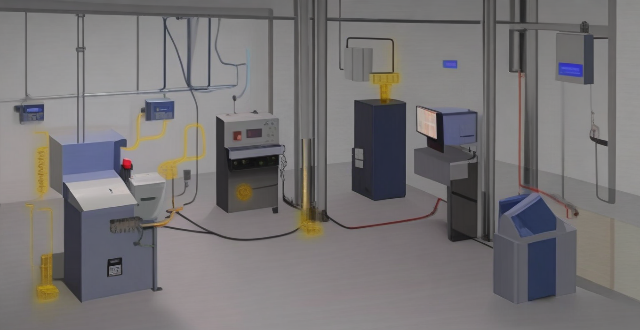
How does a speed controller contribute to energy efficiency in machinery ?
Speed controllers enhance energy efficiency in machinery by reducing energy consumption, improving motor efficiency, optimizing processes, and minimizing standby power use.

Are there any specific diets that enhance exercise efficiency ?
Yes, there are specific diets that can enhance exercise efficiency. These include a high-carbohydrate diet for energy, a low-fat diet for weight management and cardiovascular health, a high-protein diet for muscle recovery and maintenance, and a plant-based diet for optimal nutrient intake. Examples of foods in each diet category are provided, along with the benefits they offer for exercise efficiency. It is recommended to consult with a healthcare professional before starting any new diet plan.

How have building energy efficiency standards evolved over time ?
The evolution of building energy efficiency standards has been significant over the years, with a focus on reducing energy consumption and environmental impact. Early beginnings saw little consideration for energy consumption, leading to high utility bills and greenhouse gas emissions. The rise of energy conservation in the 1970s led to the development of the first building energy efficiency standards, focusing on measures such as improved insulation and efficient heating and cooling systems. The advent of green buildings in the 1990s brought new standards that minimized environmental impact through the use of renewable energy sources and sustainable materials. Technology has played a significant role in improving energy efficiency, with advances such as smart thermostats and LED lighting. Looking to the future, there is likely to be a greater emphasis on reducing energy consumption in buildings, leading to stricter standards and the development of new technologies. Overall, building energy efficiency standards have evolved to become an essential part of modern building design and construction.

How can we achieve resource-efficient utilization in industries ?
Industries play a crucial role in achieving resource efficiency, which is vital for sustainable development. Key strategies include adopting circular economy principles, improving energy efficiency, conserving water, minimizing waste, sustainably sourcing raw materials, and training employees. These practices not only reduce environmental impact but also enhance economic performance through cost savings and innovation.
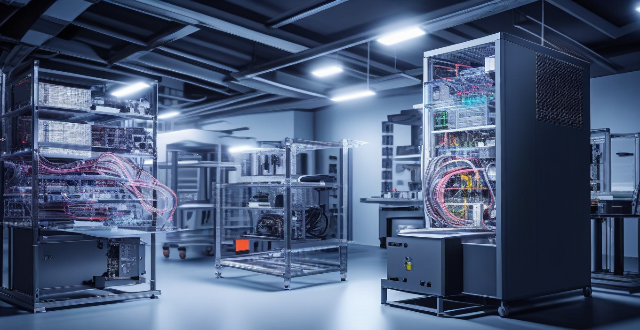
How has the adoption of Industry 4.0 technologies influenced energy efficiency in manufacturing ?
Industry 4.0 technologies significantly impact energy efficiency in manufacturing by enabling precision and optimization, data-driven decision making, resource management, promoting sustainability, and enhancing employee engagement. These advancements contribute to a future where smart manufacturing and sustainability are intertwined.

How can governments promote energy efficiency through policies and incentives ?
Energy efficiency is crucial for sustainable development, and governments can drive it through various policies and incentives. Implementing energy efficiency standards like MEPS and labeling programs, providing financial incentives such as tax credits and grants, enforcing regulatory measures including energy audits and carbon pricing, enhancing public awareness and education, supporting R&D, and fostering international cooperation are effective strategies. These measures can lead to a more sustainable future with reduced environmental impact and increased economic benefits.

What is the current state of renewable energy research and development ?
Renewable energy research and development (R&D) is a rapidly evolving field that aims to create sustainable alternatives to traditional fossil fuels. The current state of renewable energy R&D can be characterized by several key trends: ### **Advances in Technology** - Solar energy research focuses on improving the efficiency of photovoltaic cells and concentrated solar power systems. - Wind energy technology is advancing with the development of offshore wind turbines and material innovations for turbine blades. - Hydropower research explores ways to harness energy from small streams and rivers without ecological harm, as well as improvements to pumped storage systems. - Geothermal energy is expanding beyond natural hotspots through enhanced geothermal systems and binary cycle power plants. ### **Integration with Grid Systems** - Smart grids enable better management of consumer demand and integrate distributed energy resources like rooftop solar panels and small wind turbines. - Energy storage solutions, such as battery technologies and pumped hydro storage, are being refined for improved efficiency and environmental impact. ### **Policy and Economic Drivers** - Government incentives like tax credits and feed-in tariffs encourage renewable energy adoption. - Carbon pricing mechanisms, including emissions trading schemes and carbon taxes, create financial incentives for companies to reduce their greenhouse gas emissions. ### **Environmental Impact and Sustainability** - Lifecycle analysis examines the manufacturing processes and end-of-life management of renewable energy equipment to minimize environmental footprint. - Biodiversity conservation efforts aim to mitigate the impact of renewable energy infrastructure on wildlife habitats and ecosystems. As technological innovation, grid integration advancements, supportive policies, and consideration for environmental impact continue, renewable energy is expected to play an increasingly vital role in global energy supply while helping to mitigate climate change.

How do building energy efficiency standards affect the construction industry ?
Building energy efficiency standards have a significant impact on the construction industry by affecting cost implications, design philosophy, regulatory compliance, and market trends. These standards require higher initial costs due to advanced technologies and materials but offer long-term benefits like reduced energy consumption and maintenance costs. They also shift the focus of design towards energy performance and sustainability, leading to integrated design processes and innovative solutions. Compliance with these standards is crucial to avoid penalties and legal issues, while certifications like LEED or WELL can provide a competitive advantage. Finally, building energy efficiency standards influence market trends by driving demand for sustainable construction methods and educating clients about their benefits.

How does regenerative braking contribute to the efficiency of an EV ?
Regenerative braking in electric vehicles is a technology that converts the kinetic energy usually lost during braking into electricity, which can be stored in the battery and used to power the vehicle. This process significantly contributes to the efficiency of an electric vehicle (EV) by reducing energy consumption and extending the driving range. The key points include energy recovery, battery lifespan, reduced wear and tear, and improved fuel economy. The process involves detecting deceleration, motor acting as a generator, energy storage, and brake blending. The benefits of regenerative braking include increased efficiency, longer range, less battery depletion, and environmentally friendly. Regenerative braking plays a crucial role in enhancing the efficiency of electric vehicles by recycling energy that is typically lost during conventional braking methods.